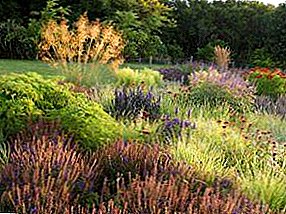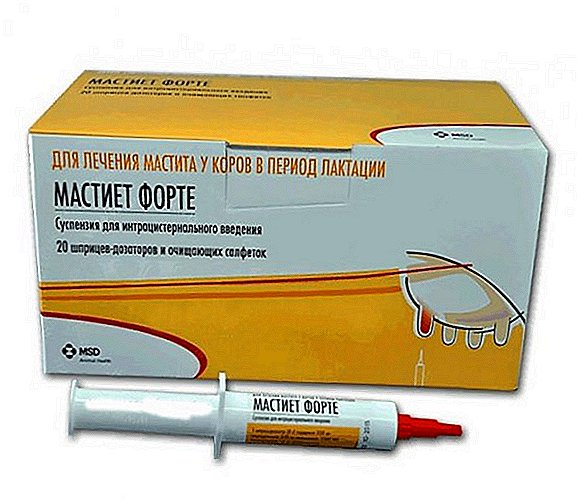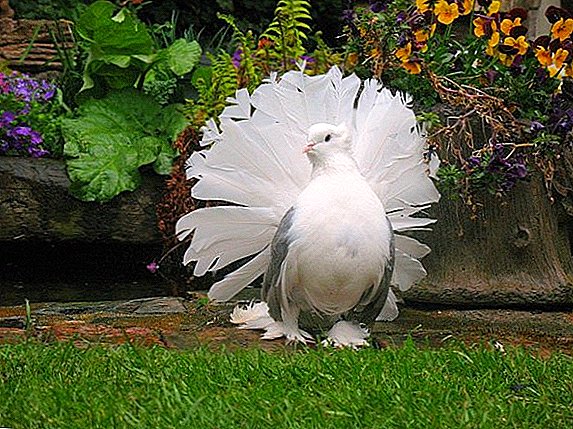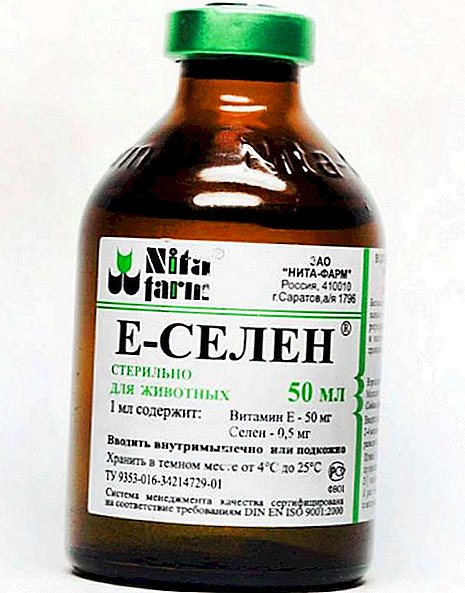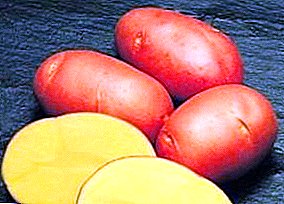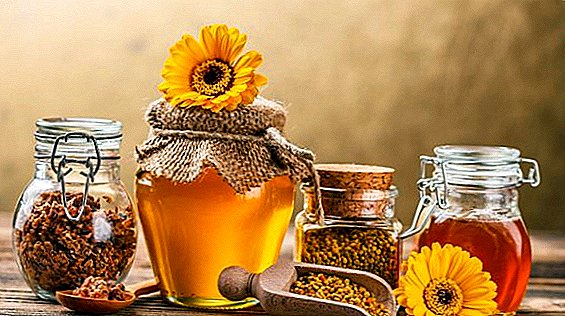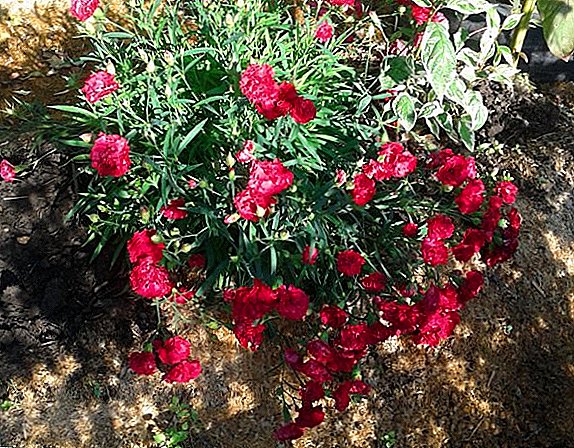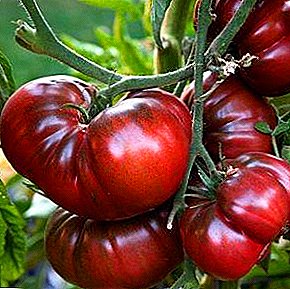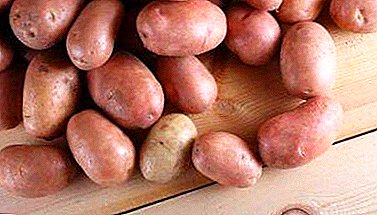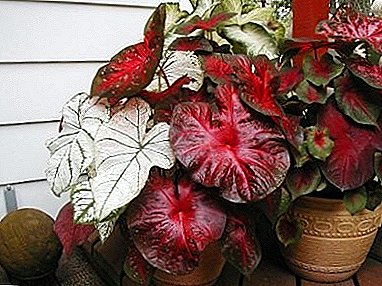
The beauty of this deciduous and ornamental plant justifies all the efforts associated with the care of him.
A lot of these troubles, because the caladium requires vigilant attention for almost the entire year, although it only pleases with its beauty for a few months.
A resident of tropical areas of South America, he is very picky about his conditions. It belongs to the aroid family and in nature has no more than 15 species. In the culture is derived more than 1000 varieties.
General description of the indoor flower
Caladium is a plant with large, very beautiful leaves of the most diverse colors. In shape, they resemble a heart or spearhead, perhaps that is why it has another name. "Heart of Jesus".
Veined leaves may have a double color. Primary colors are purple, yellow, white, red and green, it all depends on the variety.
The plant does not have a stem, leaf growth is root.
A feature of it is that leaves grow only from late spring to late summer. Then they wither and die, and the plant goes into a deep dormant period until March.
Kinds
Caladium bicolor
The photo shows a view of “Caladium bicolor”: Its leaves have a double color - red center against a background of dark green
Its leaves have a double color - red center against a background of dark green
Caladium Esculentum
Photos of the type "Caladium Esculentum": Significantly different from other varieties in the height of leaf stalks. They grow up to 100 cm and have huge leaves up to 80 cm.
Significantly different from other varieties in the height of leaf stalks. They grow up to 100 cm and have huge leaves up to 80 cm.
Caladium Violaceum
The photo shows the “Caladium Violacecum”: Differs slightly bluish shade of leaves with the lower part of the red or lilac color.
Differs slightly bluish shade of leaves with the lower part of the red or lilac color.
Caladium Hybrid
In the photo view "Caladium Hybrid": In this class, almost a white sheet is pierced with reddish veins, and a green grid seems to be draped over it.
In this class, almost a white sheet is pierced with reddish veins, and a green grid seems to be draped over it.
Home care
Caring for this flower needs a constant, but it also pays off beautifully in the summer months.
Care after purchase
 Buying Caladium is better in the form of a tuber, where you can immediately see the problems, if any. On him there should be no stains, damage and softening.
Buying Caladium is better in the form of a tuber, where you can immediately see the problems, if any. On him there should be no stains, damage and softening.
If a ready flower is taken, one must pay attention not only to the presence or absence of diseases, but also to the soil in the pot.
If she swampedsuch a plant not worth taking. If everything is in order, then you do not need to replant it after purchase. He just needs care, the usual for a period of growth. <
Pruning
Pruning Kaladium contraindicated at the end of growth leaves fall off themselves. It is imperative to remove them from the pot that they do not start to rot.
Watering
When Caladium grows, it needs abundant watering. Watering should be as soon as the top layer of soil dries. Watering is reduced when the castings stop growing. In winter, the tubers remaining in the ground, only slightly moistened, so they do not dry out.
Important! Water Kaladium should be warm boiled water.
Landing
 Planting begins with the germination of the tuber. To do this, pour sand into a saucer and place a tuber on top. In order for the buds to stick on it, it was necessary to have light and warmth in the room, not less than 22 degrees. The sand must be dry and clean.
Planting begins with the germination of the tuber. To do this, pour sand into a saucer and place a tuber on top. In order for the buds to stick on it, it was necessary to have light and warmth in the room, not less than 22 degrees. The sand must be dry and clean.
After germination, the tuber is planted in a pot. The size of the tuber is usually about 5 cm, which means the pot must be at least 10-15 cm in diameter.
The bottom is filled with a layer of drainage, then coarse sand and half a well-moistened earth.
Again sand is poured - by a hill, a hole is made in it, in which tuber is laid with the kidneys up, so that half of it remains on the surface. From above, he is covered with the second half of the cooked land.
2-3 young nodules can be planted in a pot with a diameter of 10 cm, 15 cm - 3-5. The planted tuber is watered very moderately in order to avoid its rotting.
When the first sprouts appear, you can pass the plant into a deeper pot.
Important! With deep planting, the plant gives large leaves, and with shallow - a larger number.
Transfer
 Transplant caladium required annually before the plant leaves the dormant state. To do this, the tubers are removed from the pot in which they wintered, thoroughly cleaned and inspected for damage. Then they are separated and placed in a fresh substrate in the same way as during planting.
Transplant caladium required annually before the plant leaves the dormant state. To do this, the tubers are removed from the pot in which they wintered, thoroughly cleaned and inspected for damage. Then they are separated and placed in a fresh substrate in the same way as during planting.
The soil
The most favorable soil composition for caladium is leaf and humus soil, sand and peat, all in equal parts. He prefers acidic soil.
Top dressing
It is necessary to feed the plant 1 time in three weeks in spring and autumn, when there is an active growth of leaves. Fertilizer should contain potassium, phosphorus and nitrogen.
Growing from seed at home
Growing a plant from seed may not give those generic traits (leaf color) for which they multiply. If you re-pollinate the plants, in two months you can get seeds.
 They must be sown immediately after harvest. The germination mixture should consist of leafy soil and sand in 4: 1 aspect ratio. It is necessary to deepen a seed just as much as its size. The soil needs to be well drained.
They must be sown immediately after harvest. The germination mixture should consist of leafy soil and sand in 4: 1 aspect ratio. It is necessary to deepen a seed just as much as its size. The soil needs to be well drained.
For germinating seeds need a high temperature - from 25 to 30 degrees. The higher the temperature, the faster the shoots will rise.
The seedbed can be covered with a film or glass and ventilated from time to time. Watering done only from the sprayer.
Shoots appear through 15-20 days. Replant them twice. Tubers finally formed by the fall.
Breeding
Reproduction needs to be done in early springwhen the tubers are taken from the winter pots. Child young tubers are separated. You can split an adult tuber. It is cut into pieces with a sharp disinfected knife so that each part has a kidney.
Cuts are sprinkled with crushed wood or activated charcoal and set aside for a couple of days to dry. Then each part is planted in a separate pot.
Temperature
As a native of the tropics, Caladium requires high temperatures.
Minimum temperature should not fall below 20 degrees. Sensitive plant and to the draft - it can begin to lose leaves.
Important! In winter, the tubers are stored at a temperature of 16-18 degrees.
Lighting
In order to maintain the decorativeness of the leaves, the flower needs good lighting. However, the light must be diffused. The optimal location in the apartment can be east or west windows.
Air humidity.
Unacceptable moisture reduction in the room where this indoor plant lives below 70%. To maintain this level, distilled water can be sprayed around the flower, avoiding contact with the leaves as much as possible. You can put the pot in a tray with wet pebbles.
Benefit and harm
Have caladium poisonous juicetherefore, it is necessary to keep it away from children and also to protect hands with gloves while caring for them. The inhabitants of the homeland of this plant used its tubers for food, which is why it has the name “plant with edible root”.
Diseases and pests
 Caladium is susceptible to fungal diseases, such as late blight, bacterial rot, which affects the tuber. To avoid these problems, need to adjust the watering mode.
Caladium is susceptible to fungal diseases, such as late blight, bacterial rot, which affects the tuber. To avoid these problems, need to adjust the watering mode.
Pests that a plant can suffer from are aphid, spider mites and mealybugs. You need to fight them with the help of insecticide.
If the rules of care and maintenance of the flower are observed, he will reward the magnificent caps of leaves of extraordinary beauty and elegance.


